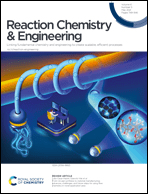
Reaction Chemistry & Engineering
Scope & Guideline
Fostering Collaboration for Chemical Engineering Excellence
Introduction
Aims and Scopes
- Reaction Engineering Innovations:
The journal covers research on novel reactor designs, including continuous flow reactors, microreactors, and photoreactors, emphasizing their role in improving reaction efficiency and selectivity. - Catalysis Research:
A core focus is on the development and optimization of catalysts, including homogeneous and heterogeneous systems, to enhance reaction rates and product yields. - Sustainable Chemistry:
Research promoting green and sustainable practices in chemical synthesis, including the use of renewable feedstocks, waste valorization, and environmentally friendly solvents. - Computational Chemistry and Modeling:
The journal includes studies utilizing computational methods to model reaction kinetics, mechanisms, and thermodynamics, driving predictive capabilities in reaction engineering. - Biocatalysis and Enzyme Engineering:
There is a significant emphasis on the use of biocatalysts and enzyme engineering for chemical transformations, highlighting their advantages in selectivity and environmental impact. - Process Intensification:
Research aimed at enhancing the efficiency of chemical processes through innovative approaches, including the integration of reaction and separation steps, and the development of novel operational strategies.
Trending and Emerging
- Machine Learning in Chemistry:
There is a growing trend towards the application of machine learning and data-driven approaches for reaction optimization and kinetic modeling, providing researchers with powerful tools for enhancing chemical processes. - Integrated Process Design:
Emerging themes include the design of integrated processes that combine reactions with separations and purifications in a single setup, highlighting the shift towards more efficient and sustainable chemical manufacturing. - Photochemical and Electrochemical Processes:
Research on photochemical and electrochemical reactions is on the rise, particularly in the context of renewable energy applications and the development of new catalytic systems for CO2 reduction. - Sustainable and Green Chemistry:
An increasing emphasis on sustainability is evident, with more studies focusing on eco-friendly solvents, renewable feedstocks, and the minimization of waste in chemical processes. - Advanced Characterization Techniques:
There is an emerging focus on the use of advanced characterization techniques, such as in situ and operando methods, to gain deeper insights into reaction mechanisms and catalyst behavior.
Declining or Waning
- Traditional Batch Processes:
There is a noticeable decrease in research focused on traditional batch processes as more researchers gravitate towards continuous flow systems and integrated approaches that offer better scalability and efficiency. - Classical Organic Synthesis:
Papers centered on classical organic synthesis techniques are becoming less frequent, with a shift towards more innovative and efficient synthetic methodologies that leverage automation and advanced catalytic systems. - Conventional Homogeneous Catalysis:
Research on traditional homogeneous catalytic processes is waning, as the field increasingly favors heterogeneous catalysis and biocatalysis for their advantages in recyclability and selectivity.
Similar Journals

Journal of Industrial and Engineering Chemistry
Unveiling Cutting-edge Industrial ApplicationsThe Journal of Industrial and Engineering Chemistry, published by Elsevier Science Inc, stands as a premier platform since its inception in 1996, dedicated to the dissemination of innovative research in the field of Chemical Engineering. Located in South Korea, this influential journal has established itself with an impressive impact factor and is categorized in the Q1 quartile for chemical engineering (miscellaneous), ranking in the top 12% of its category according to Scopus. With a focus on cutting-edge industrial applications, the journal covers a diverse range of topics including chemical processes, engineering innovations, and sustainable practices, appealing to a broad spectrum of researchers, professionals, and students. Although currently not open access, the journal offers a wealth of resources for advancing knowledge and driving forward the chemical engineering discipline. The converged years from 1996 to 2024 reflect its ongoing commitment to excellence and timeliness in publishing high-quality research.

Frontiers of Chemical Science and Engineering
Pioneering Research for a Sustainable FutureFrontiers of Chemical Science and Engineering is an esteemed journal published by SPRINGER, dedicated to advancing the rapidly evolving domain of chemical engineering. Located in New York, USA, this journal provides a vibrant platform for disseminating groundbreaking research and innovative methodologies in the field. With an impressive Q1 ranking in Chemical Engineering and a Scopus ranking of 54 out of 273, it occupies a prominent position, reflecting its high impact and relevance among academic circles. Since its inception in 2011, it has fostered interdisciplinary collaboration, encompassing diverse topics such as process engineering, environmental sustainability, and nanotechnology, making it a vital resource for researchers, professionals, and students alike. The journal's open access policy further enhances accessibility, ensuring that cutting-edge research is readily available to a global audience. As the field continues to evolve, contributions to Frontiers of Chemical Science and Engineering play an essential role in shaping future advancements and empowering the next generation of engineers.
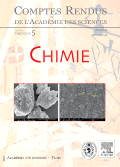
COMPTES RENDUS CHIMIE
Pioneering Research Trends in Chemistry and Chemical Engineering.COMPTES RENDUS CHIMIE, published by the prestigious Académie des Sciences in France, stands as a significant journal in the fields of chemistry and chemical engineering. With an ISSN of 1631-0748 and an E-ISSN of 1878-1543, this open-access journal has been committed to disseminating high-quality research since its transition to open access in 2020. Featuring a diverse array of studies, the journal covers innovative research trends and applications, while maintaining a Q3 category ranking in both Chemical Engineering (miscellaneous) and Chemistry (miscellaneous) as of 2023. Its Scopus rankings, positioning at #251 out of 408 in general chemistry and #169 out of 273 in general chemical engineering, highlight its growing impact within the scientific community. Authored by a global cohort of scientists and researchers, COMPTES RENDUS CHIMIE is dedicated to the advancement of knowledge and sharing insights that are vital for ongoing research and development in the chemical sciences. Located in the heart of Paris at 23 Quai de Conti, 75006, France, the journal is an essential resource for those passionate about chemistry and engineering disciplines, fostering collaboration and innovation across the world.
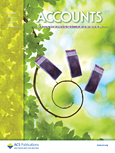
ACCOUNTS OF CHEMICAL RESEARCH
Advancing the Frontiers of Chemistry and MedicineACCOUNTS OF CHEMICAL RESEARCH, published by the American Chemical Society, is a premier journal dedicated to advancing the field of chemistry and its applications in medicine. With an impressive impact factor and recognition as a Q1 journal in both chemistry and medicine categories, it ranks among the top-tier publications, exhibiting an outstanding Scopus rank of 8 out of 408 in general chemistry, placing it in the 98th percentile. This journal has been a vital source of innovative and significant research since its inception in 1968, and it aims to provide a platform for high-quality research articles, reviews, and critical essays that bridge the gap between chemical research and clinical implications. While it is not an open-access publication, the insights available in Accounts of Chemical Research are invaluable for researchers, professionals, and students seeking to explore the latest developments and interdisciplinary approaches within the dynamic fields of chemistry and medicine.

JACS Au
Empowering the global scientific community with groundbreaking research.JACS Au, published by the American Chemical Society, is a premier open access journal dedicated to advancing research in the rapidly evolving fields of analytical chemistry, organic chemistry, and theoretical chemistry. Since its inception in 2021, JACS Au has quickly established itself as a leading platform for high-quality research, reflected in its Q1 rankings across multiple categories for 2023, including Organic Chemistry and Analytical Chemistry. The journal focuses on innovative methodologies and applications that drive the discipline forward, making it an essential resource for researchers, professionals, and students alike. With an impressive Scopus ranking, consistently placing in the top tiers of its categories, and offering a broad range of access options for its readership, JACS Au aims to foster collaboration and disseminate transformative ideas that impact the global scientific community. Exploring diverse topics within chemistry, this journal provides a vital conduit for sharing groundbreaking research and enhancing scientific dialogue.
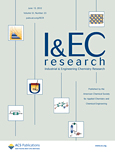
INDUSTRIAL & ENGINEERING CHEMISTRY RESEARCH
Advancing the Frontiers of Chemical Engineering ResearchINDUSTRIAL & ENGINEERING CHEMISTRY RESEARCH, published by the American Chemical Society, is a pivotal journal that disseminates high-quality research in the fields of Chemical Engineering, Chemistry, and Industrial and Manufacturing Engineering. With an impressive impact factor, this journal ranks in the top quartile (Q1) across multiple categories, reflecting its significance and influence within the scientific community. Since its inception in 1987, IECR has provided a platform for researchers, professionals, and students to publish innovative findings that advance the understanding and application of engineering chemistry. Though it operates under a subscription model, the journal continues to foster collaboration within the field, inviting contributions that span theoretical advancements, experimental studies, and practical applications. Whether you are engaged in academia or industry, IECR serves as a vital resource for staying abreast of the latest developments in chemical and engineering research.
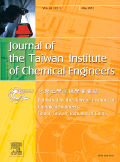
Journal of the Taiwan Institute of Chemical Engineers
Exploring the frontiers of chemistry and engineering.The Journal of the Taiwan Institute of Chemical Engineers is a prestigious publication in the field of chemical engineering and chemistry, published by Elsevier. With an impressive impact factor placing it in the top quartiles (Q1) of both the Chemical Engineering (miscellaneous) and Chemistry (miscellaneous) categories, this journal serves as a vital platform for disseminating cutting-edge research and innovative findings. Since its inception in 2009 and continuing through 2024, it has established a strong reputation with notable Scopus rankings—ranked 40th out of 273 in General Chemical Engineering and 62nd out of 408 in General Chemistry, reflecting the journal’s significance in its field. By offering open access options, the journal ensures that research is readily available to a global audience, fostering collaboration and knowledge exchange among researchers, professionals, and students. The Journal of the Taiwan Institute of Chemical Engineers is dedicated to advancing the discipline of chemical engineering and supporting the development of novel scientific methodologies and applications.
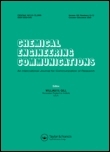
CHEMICAL ENGINEERING COMMUNICATIONS
Transforming Research into Real-World Applications.Chemical Engineering Communications, published by Taylor & Francis Inc, is a distinguished journal within the realms of Chemical Engineering and Chemistry. With an ISSN of 0098-6445, this journal plays a pivotal role in disseminating innovative research, critical reviews, and insightful discussions that encompass a broad spectrum of topics in these fields. The journal boasts a commendable Q2 ranking in the 2023 category of chemical engineering and general chemistry, reflecting its significant contribution to the scientific community. Operating under a rigorous peer-review process, the journal attracts high-quality submissions from global researchers. Although currently not an Open Access journal, it provides extensive archive access for users interested in exploring past advancements from its inception in 1973 through to 2024. With a commitment to advancing knowledge and fostering collaboration among academia and industry, Chemical Engineering Communications remains an essential resource for professionals and students aiming to stay abreast of the latest developments in chemical sciences.
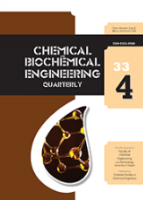
CHEMICAL AND BIOCHEMICAL ENGINEERING QUARTERLY
Shaping the Future of Chemical and Biochemical EngineeringCHEMICAL AND BIOCHEMICAL ENGINEERING QUARTERLY, published by the Croatian Society of Chemical Engineering Technology, is a distinguished open-access journal that has been providing a platform for the dissemination of innovative research since its inception in 1987. With a focus on the fields of biochemistry and chemical engineering, this quarterly journal addresses a wide array of topics, including process chemistry and technology, making significant contributions to both academia and industry. Despite its current positioning in the Q4 category for biochemistry and Q3 for miscellaneous chemistry and process chemistry in 2023, the journal continues to strive for greater impact, catering to researchers, professionals, and students alike. Its open-access model, in place since 2001, ensures that cutting-edge research is accessible to a broad audience, fostering collaboration and knowledge sharing within the scientific community. By promoting high-quality research and providing insights into the latest advancements, Chemical and Biochemical Engineering Quarterly remains an essential resource for those involved in the chemical and biochemical engineering disciplines.
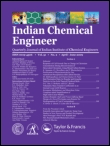
Indian Chemical Engineer
Pioneering Insights for Industry and Academia.Indian Chemical Engineer, published by Taylor & Francis Ltd, stands as a reputable journal in the field of chemical engineering, encompassing a wide range of topics pertinent to both academia and industry. With an ISSN of 0019-4506 and an E-ISSN of 0975-007X, this journal has been a key resource for researchers and professionals since its inception in 1992, undergoing a significant evolution from 2009 to 2024. Currently ranked in the Q3 category of chemical engineering (miscellaneous) in 2023, it reflects a dedicated commitment to disseminating innovative research and insights within the discipline. The journal is indexed in Scopus, achieving a rank of 148 out of 273, which denotes its growing influence in the field with a 45th percentile placement. Although currently not an open-access publication, it offers valuable content that contributes extensively to the advancement of chemical engineering research and education. Researchers, professionals, and students alike are encouraged to engage with this publication to stay at the forefront of industry advancements and academic discussions.